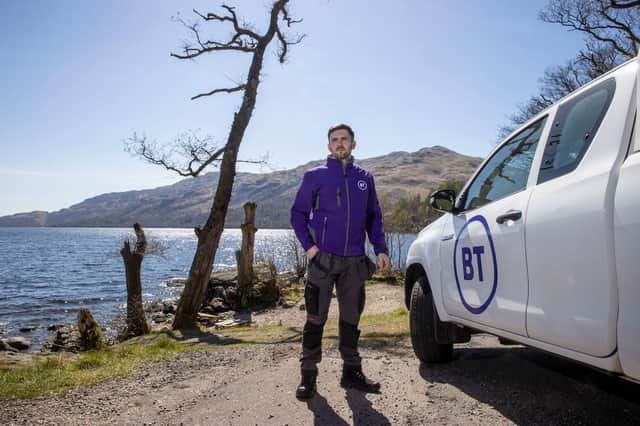BT help create ‘living laboratory’ for Scotland


Before the pandemic, councils were already recognising the positive impact technology can have in connecting people, supporting businesses, and bonding communities, but there’s no doubt that the last 15 months have seen digital adoption accelerate, with innovative projects helping across the central belt.
Technology has empowered local authorities to keep delivering vital services and now there’s an opportunity to expand its reach to benefit more people and bring new growth.
Over the last few years BT has been at the forefront of exciting success stories of how technology is enabling better outcomes for local authorities and the public – underpinning better social and health care, stronger communities, greener places, and opportunities to drive revenue and cut costs.
One such example is their work with the University of Stirling to help build a world-leading “living laboratory” for central Scotland The laboratory is a state-of-the-art environmental monitoring system and is the first of its kind in the UK to help businesses in the region make intelligent and data driven business decisions.
The laboratory will have access to BT’s award winning 5G network which was recently switched on in the Stirling area. With EE’s 5G network now in more than 160 locations in the UK, including most of the major cities and towns in Scotland, all kinds of exciting innovations and partnerships are possible.
The living laboratory project, led by the University of Stirling will work by capturing, processing and sharing data from across Forth Valley using EE 5G. Using sensors, satellite data and AI, the laboratory will provide vital information on water quality to inform decisions that could help provide major economic and sustainability efforts to that area.
The Forth Valley has played a significant role in Scotland’s industrial revolution, and it’s exciting to think about how these kinds of projects will also help drive the next digital revolution and help the transition to a net-zero economy. And, as the economy begins to build again following the impacts from Covid-19, we know that technology – and particularly 5G – will help to enable jobs, revive the business industry and help as part of our green recovery program.
So how will it work? Initially, BT will work with partners to demonstrate how the platform can be used to:
- monitor water quality in drinking water reservoirs;
- provide near real-time forecasts of bathing water quality;
- provide early warning and monitoring of floods;
- demonstrate environmental compliance in the brewing and distilling sector.
The flood monitoring element will span the full catchment of the River Forth, while the other cases will focus on the River Leven sub catchment.
In the long-term, the solution could be applied in a wide range of settings and across multiple sectors, including agriculture, fisheries, shipping and navigation, food and drink, biodiversity and conservation, oil and gas, renewables and low carbon, green tourism, local and national governance and public health.
The possibilities are endless and it’s humbling to see how technology can play a fundamental role in our environmental efforts.
BT pledged to become a net zero carbon emissions business by 2045, and the partnership with University of Stirling can demonstrate how other businesses can benefit from environment-based solutions too.
To find out more about our Forth Era programme, visit bt.com/forthera